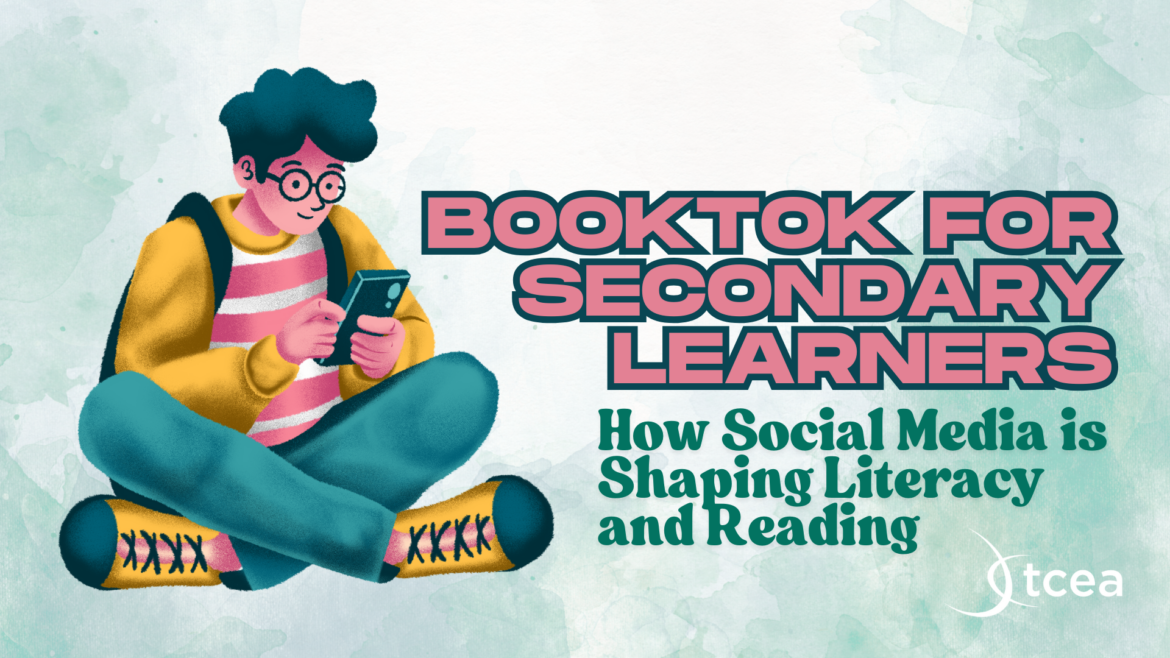Whether you love it or hate it (or fall somewhere in-between), social media is undoubtedly shaping the minds of today’s students. And, while there are proven downfalls associated with its use, there are also benefits that can come from using social media as a tool. With proper oversight and coaching, this modern-day information overload can actually yield positive results. Check out the benefits of using platforms like BookTok for secondary learners below!
BookTok for Secondary Learners
As an educator, you may have heard of — or even be an active participant in — BookTok. This subculture of TikTok users provides reviews, summaries, read-alongs, and recommendations for book lovers of all ages (see our “Awareness and Oversight” disclaimer below).
As an avid reader and TikTok user, myself, I can comfortably say that I have discovered and read more books in the past few years than in the entire decade prior, largely due to the community BookTok provides. And while my BookTok focus is on YA and adult fantasy novels, I was shocked to learn just how vast the community actually is! From children’s read-alongs by actual authors to teacher and librarian guides to which popular books may not be appropriate for certain age groups, BookTok provides information and mentorship for all readers.
But I was even more surprised to hear how BookTok can foster a love of reading and improve literacy skills in secondary students. Yes, you read correctly. There are measured benefits to using social media like BookTok for secondary learners! Crazy, right?
It’s been proven that teens are far more likely to use social media than pick up a book, but what about when that book connects them to an entire social network? That’s BookTok.
BookTok in Your Classroom
So, what does that mean for your students? Students who use BookTok (properly and with supervision) may experience several benefits, including:
- Increased Reading Engagement
- Discovery and Recommendations
- Positive Impact on Reading Habits
- Improved Literacy and Critical Thinking
Not to mention a sense of community and belonging, founded on shared interests.
Activities and Ideas
Ready to incorporate BookTok into your secondary classroom? Check out these fun ideas courtesy of my personal favorite AI tool, Perplexity!
Summer Reading or Favorite Book Pitches: Have students create 30-second pitches about their summer reading or favorite YA books. After each pitch, allow time for questions and discussions, mimicking the “comment” section on TikTok.
Book Recommendations: Use BookTok to deliver book recommendations in a creative way. For example, dress up as a character from the book or use themed music to make the recommendations more engaging.
Compare and Contrast Videos: Encourage students to create short videos comparing and contrasting books based on themes, settings, or characters. This activity promotes higher-order thinking skills.
Book Trailers and Excerpts: Have students create book trailers or read excerpts from books in a TikTok-style format. This can help pique interest in upcoming class readings.
Character Perspectives: Ask students to create videos from the perspective of a character from a book they are reading. They can dress up and share their character’s thoughts and feelings.
Author Interviews: Conduct mock author interviews where students prepare questions and either you or a colleague responds as the author. This can be done in a video format similar to BookTok.
BookToks Instead of Traditional Book Talks: Replace traditional book talks with short BookTok-style videos. This can be a more engaging and time-efficient way to share book recommendations.
Comparing Books to Other Media: Have students create videos comparing books to songs or other media forms. This encourages creativity and critical thinking.
Awareness and Oversight
While BookTok can be a great resource for students, it is also a tag used by adults to share more explicit novels that are not age-appropriate for middle or even high school learners. When you hear students talking about BookTok, or are discussing its use in your classroom, keep an eye out for any inappropriate titles and make sure to oversee or approve student’s selections.
Do you use social media like BookTok for secondary learners?
We’d love to hear about your experience! Whether you have an age-appropriate tool for similar video-formatted book reports or have used social media in your own reading lesson plans, let us know in the comments below!

